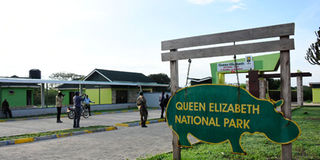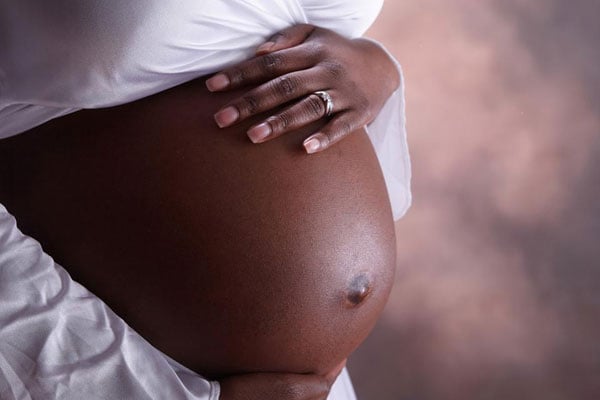Government moves to cool locals’ tempers over oil drilling in Queen Elizabeth park

In the spotlight. Queen Elizabeth National Park. Government has explained the process it will take before issuing oil exploration licences for the Ngaji block in the park. PHOTO BY ERIC DOMINIC BUKENYA
What you need to know:
- Concern. Environmentalists worry they will lose the ecosystem while fishermen fear for their source of livelihood.
KASESE/KANUNGU. The government has explained the process it will take before issuing oil exploration licences for the Ngaji block in the Queen Elizabeth National Park, where surrounding communities and some civil society organisations (CSOs) are trying to put up a spirited defence of the ecosystem.
The Ngaji block is an oil and gas exploration area around Lake Edward, on the side of Kasese and Kanungu.
The area is adjacent to the Virunga National Park in DR Congo. It is a world heritage site and forms part of the same continuous ecosystem.”
Currently, there is a petition raised by environmentalists and fishermen expressing fear for the environment and fishermen losing their source of livelihood.
The permanent secretary in the Ministry of Energy, Mr Robert Kasande, in an interview, however, said it is too early to raise the red flag over the planned exploration.
Mr Kasande said the people raising the petition need to first visit Murchison Falls National Park to confirm any kind of environmental issues the exploration caused on the side of Nwoya District before seeking to block it in Queen Elizabeth National Park.
“It is preliminary for anybody to put such a petition because we have not yet put that area for exploration licensing. If you go to Murchison, you will be able to see that nothing bad happened there,” he said.
Mr Kasande said when the ministry sets out an exploration area for licensing, sensitisation meetings would be held in the affected areas.
Mr Jeconious Musingwire, the south-western regional officer for National Environmental Management Authority (Nema), said: “Geological process of oil normally affects water, but licensing moves in phases, there will be public hearings where there is an issue raised, it will be considered, all stakeholders must be consulted, Nema has to license after a scientific research has been done.”
The activists, who include members of Kasese Youth and Women Clean Energy Clubs and a local CSO, contend that this area is a world heritage site and forms part of same continuous ecosystem.
They said if oil exploitation is carried out, it will affect the ecosystems and render fishermen jobless yet it is uncertain that the oil industry would offer them jobs.
Some of the activists of the CSO are linked to Africa Institute for Energy Governance (AFIEGO), which has been a champion in advocating community issues, especially in Bunyoro, where oil and gas production is expected in a few years.
Their recent concerns rose after government’s plan to launch the second competitive licensing round for oil blocks, which would include Ngaji oil block, this week.
Cabinet this week approved the licensing of at least nine exploration areas, Ngaji block inclusive.
Ngaji oil block was one of the blocks that were not licensed due to community, CSO and international pressure.
Mr Nicholas Kagongo, one of the activists based in Katwe-Kabatoro Town Council, Kasese District and also a field officer for Kasese National Association of Professional Environmentalist, said:
“The Ministry of Energy should not license out the Ngaji oil block for oil exploration, because the block covers the Uganda side of Lake Edward and parts of Queen Elizabeth National Park that borders directly with the Virunga National Park in DR Congo, the world heritage site and forms part of the same continuous ecosystem.”
He said allowing oil exploration would put Lake Edward and Queen Elizabeth National Park at a risk because an estimated 200,000 fishermen and local communities such as Rwenshama, Katwe, Kisenyi, Kayanja on the Uganda side depend on the lake.
Mr Kagongo said the lake is also a home to several birds species, elephants, crocodiles, lions, buffaloes and hippocampus.
He said: “The oil activities in Queen Elizabeth could damage the ecosystem, the people and wildlife that depends on it, because this part of the park is where unique animals like Toppi and the climbing lions of Ishasha (in Rukungiri) and attract many tourists for game drive, so the oil drilling would directly impact on the fragile ecosystem”.
Mr Kagongo said the tourism potential of the area could harvest lots of money than the non-renewable oil resource.
Mr Joshua Rukundo from Kanungu Disrict, which will also be affected if Ngaji oil block is licensed out, said nearly an entire parish would be affected yet Kanungu has high population pressure.
“If Ngaji oil block is licensed, it will affect the ecosystem. I think the government should find an alternative venture.” Rukundo said.
Mr Edwin Mumbere, the co-ordinator of Coalition of Kasese Women and Youth clean energy clubs, said: “Ngaji oil block serves economic, social, cultural and aesthetic purposes that no amount of money from oil exploitation can replace that from tourism.”
Uganda is signatory to the Paris Climate Change Agreement which among others promotes environmental conservation and addressing climate change.
The Paris Agreement aims to keep global warming below a 2 degree Celsius by the end of the 21st Century and pursue efforts to limit the temperature rise to 1.5 degree Celsius, according to the recommendations of the Intergovernmental Panel on Climate Change.
As well the Paris Agreement text stipulates that developed countries must financially assist developing countries both in terms of adaptation to global warming and mitigation of greenhouse gas emissions, which requires the expansion of renewable energies.
According to the Wilderness Society, an online publication, there are several ways oil and gas drilling is bad for the environment.
They say oil and gas drilling is a dirty business and has consequences for wild lands and communities. That it disrupts wildlife migration routes and habitats from noise pollution, traffic and fences.
It is characterized by oil spills on land and offshore drilling sites, landscape changes from well pads and roads, oil and gas infrastructure and traffic spoil peaceful settings for visitors, haze, toxic chemicals and dust pollute the air and water.
That machinery, gas flares and light pollution disrupt scenic views and clear night skies and dangerous methane emissions contribute to climate change.
Oil development and production
Uganda’s oil and gas industry is transitioning from exploration and appraisal to development and production.
The components involved at the development and production stage include well pads, pipelines, Central Processing Facilities (CPF) and other infrastructures.
Well pads consist of production wells, injection wells and well fluid. Production wells are wells through which the oil flows to the surface; Injection wells are wells used to pump water into the oil fields to stimulate the oil flow, and; Well fluids are a mixture of oil, gas, water and impurities.
Production pipelines to transport produced oil and gas. Water abstraction and water injection pipelines to transport water. Polymer injection pipeline to transport polymer from the Central Processing Facilities to Oil Wells.
In the CPF, the oil, gas and water in the well fluids will be separated. This is safely done in many places in the world.
Other project infrastructures will include; new field roads, upgraded roads, workers’ camps and operational support bases and other facilities - borrow pits and waste disposal area.
The oil blocks in Uganda are in the Albertine rift basin, close to the border with DRC, where commercial oil deposits are estimated by government geologists to total 6 billion barrels. The six blocks are in Ngassa, Tai Tai & Karuka, Mvule, Turaco, Kanywantaba and Ngaji
Effects of Oil & Gas
According to the Wilderness Society, an online publication, there are several ways oil and gas drilling is bad for the environment.
They say oil and gas drilling is a dirty business and has consequences for wild lands and communities. That it disrupts wildlife migration routes and habitats from noise pollution, traffic and fences.
It is characterised by oil spills on land and offshore drilling sites, landscape changes from well pads and roads, oil and gas infrastructure and traffic spoil peaceful settings for visitors, haze, toxic chemicals and dust pollute the air and water.
That machinery, gas flares and light pollution disrupt scenic views and clear night skies and dangerous methane emissions contribute to climate change.
Oil development and production
Uganda’s oil and gas industry is transitioning from exploration and appraisal to development and production.
The components involved at the development and production stage include well pads, pipelines, Central Processing Facilities (CPF) and other infrastructures.
Well pads consist of production wells, injection wells and well fluid. Production wells are those through which the oil flows to the surface; Injection wells are used to pump water into the oil fields to stimulate the oil flow, and; Well fluids are a mixture of oil, gas, water and impurities.
In the CPF, the oil, gas and water in the well fluids will be separated. This is safely done in many places in the world.
Project infrastructure. These are field roads, upgraded roads, workers’ camps and operational support bases, borrow pits and waste disposal area.
The oil blocks in Uganda are in the Albertine rift basin, close to the border with DRC, where commercial oil deposits are estimated by government geologists to total 6 billion barrels.
The six blocks are in Ngassa, Tai Tai & Karuka, Mvule, Turaco, Kanywantaba and Ngaji




